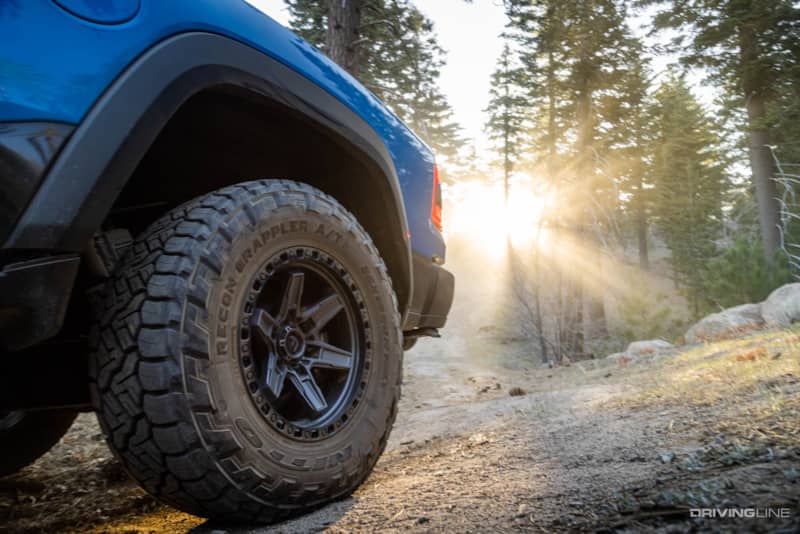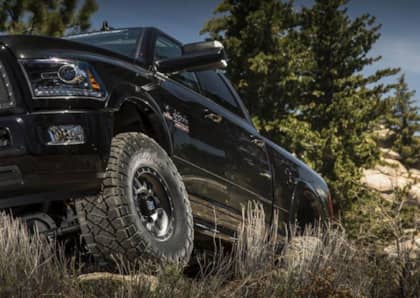Maintenance Musts for Your Vehicle Before Hitting the Off-Road Trail
No matter the terrain your off-road vehicle sees, there are standard basic maintenance musts that are absolutely necessary. Keep in mind that older and harder-driven rigs may require additional visual checks, servicing, and parts replacements to minimize parts failures and repairs when venturing off-road. But don't get discouraged, because it's all relatively easy. And don't forget the old adage, an ounce of prevention is worth a pound of cure—in other words, it pays to prepare and maintain your vehicle.
The Basics
All vehicles need regular oil changes, coolant checks, and regular servicing to keep them running and performing at their best. It's a good idea to have a bottle of coolant and at least a quart of oil with you just in case something goes wrong, like a sudden leak.

General upkeep also includes checking that everything is functioning properly including lights, wipers, accessories, and a clean air filter. Think of it as a checklist to tick off before venturing out. Your brakes will get used often as a crucial aspect of driving off-road so keep up with consistent pad and rotor (when necessary) replacements as well as fluid servicing. This might be sooner than recommended if your vehicle sees extreme conditions like deep mud, high dust, or sandy environments.

Torqued, Greased & Inked
A fun overlanding game to play is called ‘What’s that rattle?’ Increased travel and rocky vibrations can loosen up bolts, suspension components, and even door latches, especially when the trail has been washboarded by rain. One hopes that the noise is simply loose camping gear or other accessories. If you hear noises coming from your suspension, inspect it immediately and get it fixed ASAP, because that noise is an indication your suspension performance will be hindered and there is a possible breakdown of those parts in the near future.

So make sure everything is properly tightened, and lubricated as needed. Suspension components should be regularly greased, especially with specialty aftermarket suspension as it is key to increasing their longevity and performance.

Depending on how often you go off-roading, perform regular suspension and shock checks. Part of that check includes re-torquing hardware. And it is a good idea to mark fully torqued bolts with a paint marker, just like the factory did, in order to easily see if anything has loosened up before it becomes a problem.
Rotation & Inflation
Chances are the maintenance light on your dash will remind you to get your tires rotated for even wear as required, so… just do it. What also helps with even wear is properly inflating your tires to their recommended specs for road driving. Airing down properly as well can be key. The air pressure level to air down to depends on your tire size, vehicle weight, driving needs, and the terrain.

For example, a 33 or 35-inch tire, that runs at 35 PSI on the highway, is aired down to 15-20 PSI to provide for comfort and traction on the trail. At that pressure, the tire can still survive on the pavement until you’re able to air it back up—but do it as soon as possible.

All-terrain tires such as the new Nitto Recon Grappler A/T are perfect for vehicles that function as both daily commuters and weekend overland and off-road rigs. They allow for enough traction off-road, yet maintain on-road performance and longevity better than mud tires. But at some point, tires need replacing. While you might tempt fate by letting your street tires get down to near drag slicks before heading to the tire store; one should be more for more proactive with off-road tires. The loss of traction from balding tread might find you stuck in some tough spots on the trail. Please, replace your worn out tires before heading off-road.
Trailside Repairs
Even with proper maintenance and planning, accidents happen, and a plan B might be needed to make sure you can get back home. Depending on the difficulty or length of your trip; bringing hoses, belts, clamps, hardware and certain spare parts should be essentials of your load-out gear.

Building a kit to bring with you for trailside repairs should include basic tools and any other tools specific to your aftermarket parts and/or vehicle. A battery power pack, capable of jumpstarting your dead battery, can also charge your phone. A tire plug kit and extra valves should be included, but a full-sized spare is always best. A trail jack that meets the requirements of your wheel size and suspension setup can also be utilized as recovery gear, which is a whole other story. Smaller motorcycle ratcheting straps are not only great for strapping down gear and tents but can provide a crutch for busted suspensions to at least get you to a spot that you are able to repair it or to a trailer to get you home. And bring zip ties, plenty of zip ties. Just in case something breaks or becomes loose out on the trail.











